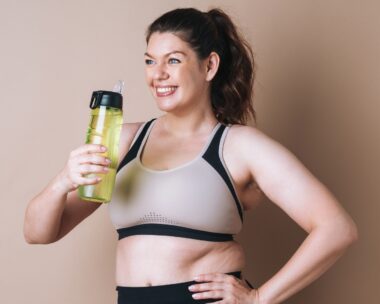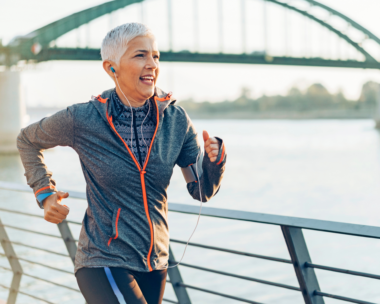Even with thousands of exercise options to choose from, a walk is one of the most effective ways to maintain health and fitness.
Here, we look at the latest research, plus exercise physiologist Sonia Glanville reveals the surprising ways walking helps the body and mind, and how to make the most of it.
1. Circulation improves
Walking is great for the circulatory system – oxygenating our blood and boosting blood flow by enlarging blood vessels. Walking also helps to prevent deep vein thrombosis by using the deeper calf muscle, which assists blood flow back to the heart. “This is especially beneficial for women on the contraceptive pill, which has been shown to elevate the risk of blood clots,” says Glanville.
2. Stress levels fall
If you work in an office, try walking daily for 30 minutes in a ‘green’ environment such as a park for eight weeks. Research shows you’ll sleep better and significantly lower high blood pressure and stress levels. “Walking helps decrease the levels of the stress hormone cortisol and improves cognitive function (our ability to focus),” says Glanville. “We’re less likely to ruminate and instead enjoy our surroundings and be in the moment.”
3. Creativity gets a boost
There’s a reason some companies hold walk ’n’ talk meetings. US researchers examined creativity levels of people while they walked versus while they sat and found the walkers increased creative output by 60 per cent. The results were the same whether the participants walked indoors on a treadmill or outdoors in nature.
4. Heart becomes healthier
Walking is one of the easiest ways to protect your heart. Studies have found that brisk walking is as good as running for lowering cholesterol, blood pressure and diabetes risk – the three key factors in the development of heart disease. Walking for at least 30 minutes each day at a pace of around 4km per hour reduces heart disease risk by 30 per cent.
5. Breathing is easier
Walking increases your breathing rate, which means you take in more oxygen and strengthen your respiratory muscles. “It is beneficial for those with asthma and COPD (chronic obstructive pulmonary disease) as long as you walk indoors on high pollution days where air quality is poor,” says Glanville.
6. Immunity is stronger
Just 20 to 30 minutes of walking each day makes you 30 per cent less likely to pick up respiratory infections such as the common cold, say UK researchers. It’s thought that walking helps the body flush bacteria out of the lungs and airways, which reduces the chance of getting airborne illnesses. Walking also causes white blood cells (the body’s disease fighters) to circulate more rapidly and detect illness earlier.
7. Aids weight loss
Walking is a great way to shed kilos. “A 70kg person walking at a pace of 4.5-5km/h for 30 minutes will burn 776kJ,” says Glanville. Wear a pedometer or activity tracker and aim for 10,000 steps a day, the amount recommended by the Heart Foundation. US research has shown this is the magic number needed to reduce body weight, lower blood pressure and alter body composition. For optimal fat-burning, keep your heart rate at 60 to 70 per cent of its maximum. (Maximum heart rate is 220 beats per minute, minus your age.)

Walking checklist
POSTURE: Stand up straight, with your pelvis slightly tilted forward, knees soft, shoulders relaxed and eyes and chin forward. Bend your elbows to 90 degrees and keep them close to the body. Keep hands relaxed.
TAKE A STEP: Strike the ground first with your heel. Roll through the step from heel to toe. Push off with your toe.
STRIDING OUT: Avoid taking big strides, which can place too much load on your back. Instead, take comfortable, smaller steps. With each step, the arm opposite your forward foot comes straight forward and then back.
STRETCH: After walking, stretch your lower back and legs, focusing on quads and calves, to avoid tight muscles.
Which surface?
Walking on soft surfaces like grass, mud or sand will burn more kilojoules as your leg muscles have to work harder to propel your body forward. A treadmill can absorb shock, but its smooth surface doesn’t activate as many muscles as real ground, so it’s best to set the incline at 1 to 2 per cent.
Walking on concrete or pavement will be harder on your feet and joints, so look for walking shoes with good cushioning and shock absorption to offset the impact.




